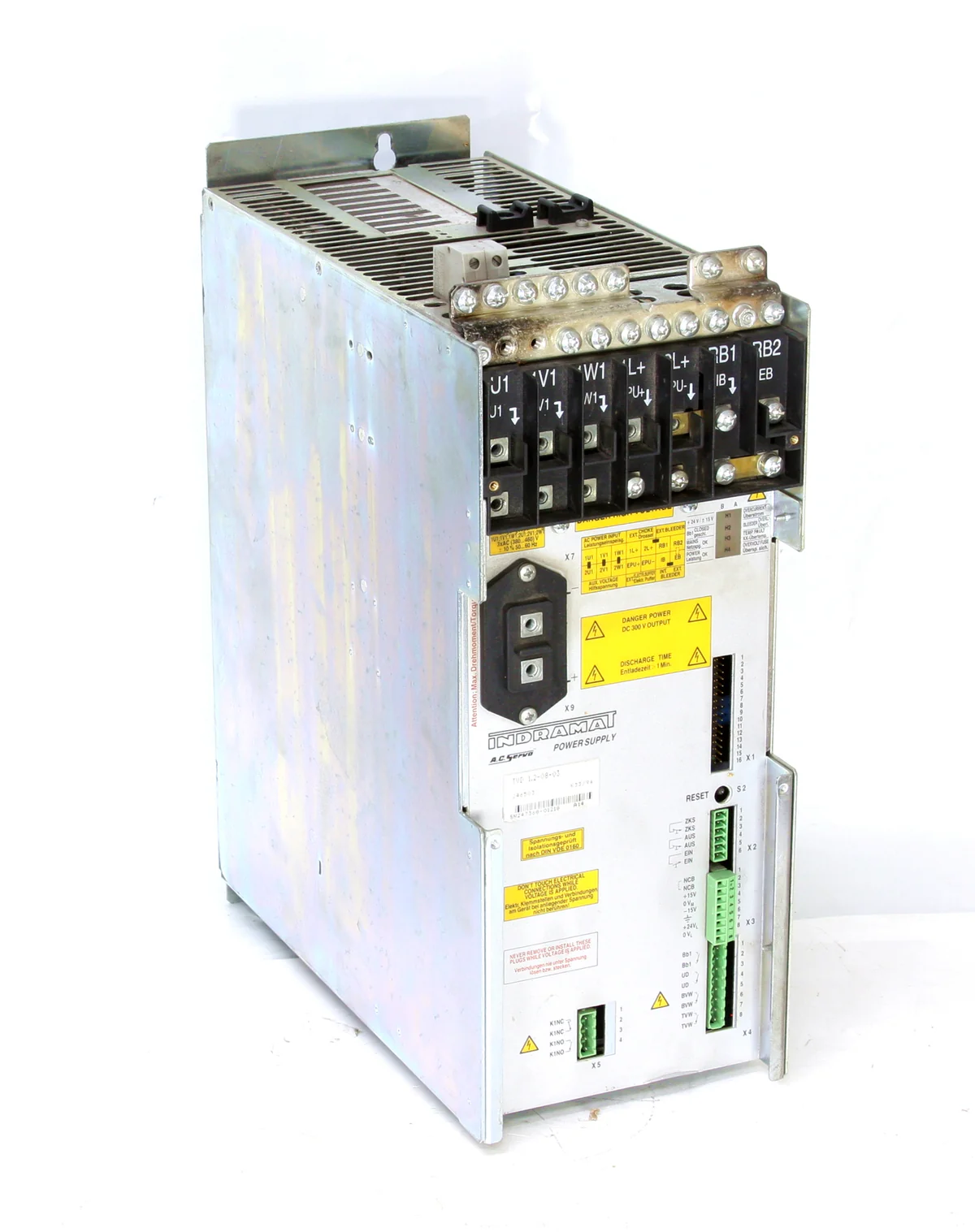
How Are Power Supply Faults Displayed?
Indramat power supplies are critical components in the manufacturer’s motion control systems, converting incoming AC voltage into regulated DC power for drives, motors, and controllers. While known for their durability and long-term performance, these power supplies like all industrial components are subject to wear, aging, and occasional faults. When something goes wrong, accurate and timely fault diagnosis is essential to avoid damage and reduce downtime.
Role of Indramat Power Supplies
In addition to voltage transformation, Indramat power supplies monitor several key operational parameters including:
-
Drive current
-
Temperature
-
Line voltage levels
-
Motor feedback
-
Bleeder resistor load
If an issue arises in any of these areas, the power supply will cut power to the drive to protect both the system and connected components. This protective measure is often accompanied by clear fault signals or codes.
How Power Supply Faults Are Indicated
Indramat power supply units (PSUs) are equipped with diagnostic indicators that reveal fault conditions. Depending on the PSU model, these faults may be displayed in one of two main ways:
1. LED Diagnostic Displays
Many Indramat power supplies use red and green LED lights to convey the system’s operating status:
-
Green LEDs – Indicate normal operating conditions.
-
Red LEDs – Indicate a fault or warning condition.
Each light corresponds to a specific function or component being monitored. For example, in TVD power supply modules, a lack of LED illumination may be expected during a bleeder overload signal—so not all “no light” cases indicate a problem.
The meaning of each LED color and pattern varies by model, so it’s important to consult the original Indramat manual for your unit.
2. Digital 7-Segment Displays
Some advanced power supplies, such as TVR and KVR units, feature both LED lights and a two-digit digital display. This combination provides a more detailed overview of the PSU’s status, offering numeric codes that pinpoint specific fault conditions.
These two-digit alphanumeric codes allow faster diagnosis and more targeted troubleshooting. For example:
-
E1might indicate overvoltage. -
F2could signal a bleeder circuit overload. -
00typically means normal operation.
Again, the specific meaning of each code depends on the PSU model and should be referenced in the manual.
Common Causes of Power Supply Faults
Some of the most frequent issues reported in Indramat PSUs include:
-
Blown internal fuses
-
Voltage irregularities (too high or too low)
-
Short circuits in the drive or wiring
-
Overheating due to poor ventilation
These faults are designed to be automatically caught by the power supply’s diagnostics system, preventing further component damage.
Clearing Power Supply Fault Codes
Once a fault has been corrected, the error message or fault condition must be cleared before the machine can resume operation. This is typically done by:
-
Pressing the S2 reset button – This interrupts power briefly to reset the controller and clear the error code.
-
Power cycling the unit – In some cases, turning the main power off and back on may also clear non-critical faults.
Note: Always ensure the system has fully discharged and is motionless before attempting any repairs or resets.
Safety Precautions
When handling or troubleshooting a faulty Indramat power supply, always:
-
Turn off power to the cabinet.
-
Wait for components to fully discharge.
-
Avoid making adjustments while the drive or system is running.
-
Remove the PSU from the machine before performing any repairs.
For more information, contact PLG Automation:
Email: sales@plgautomation.com
Phone: 800-906-9271
